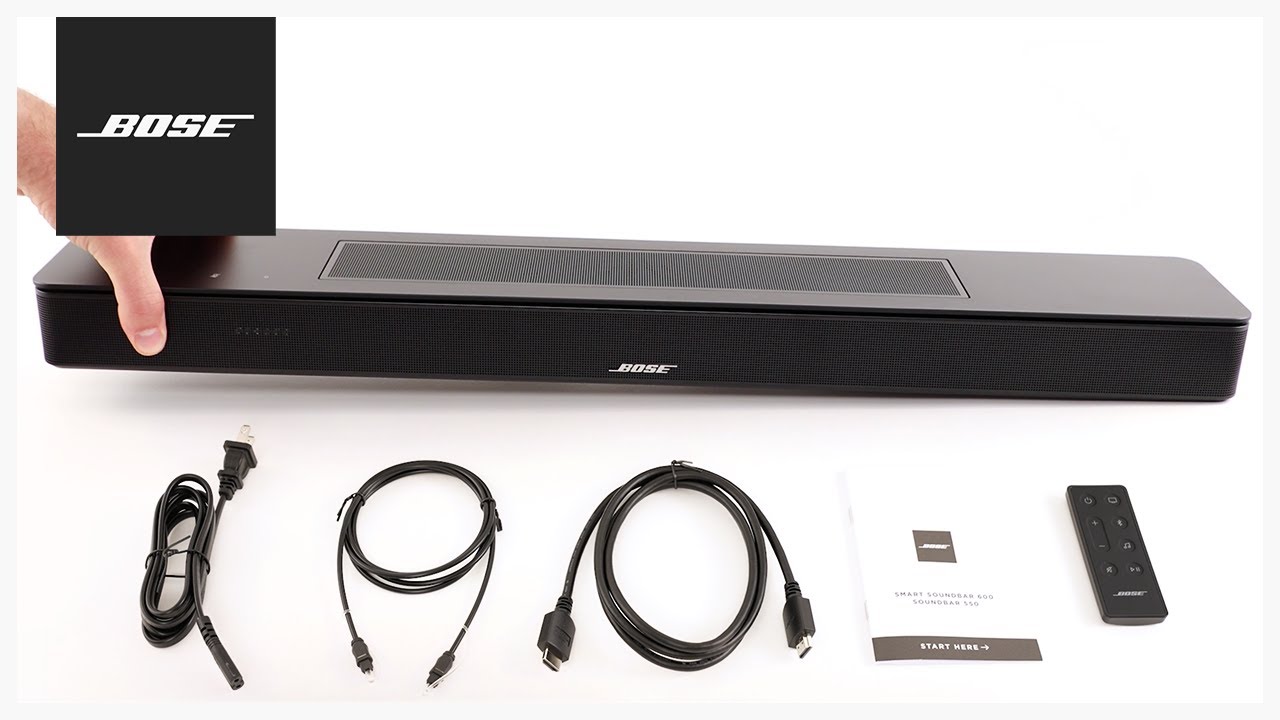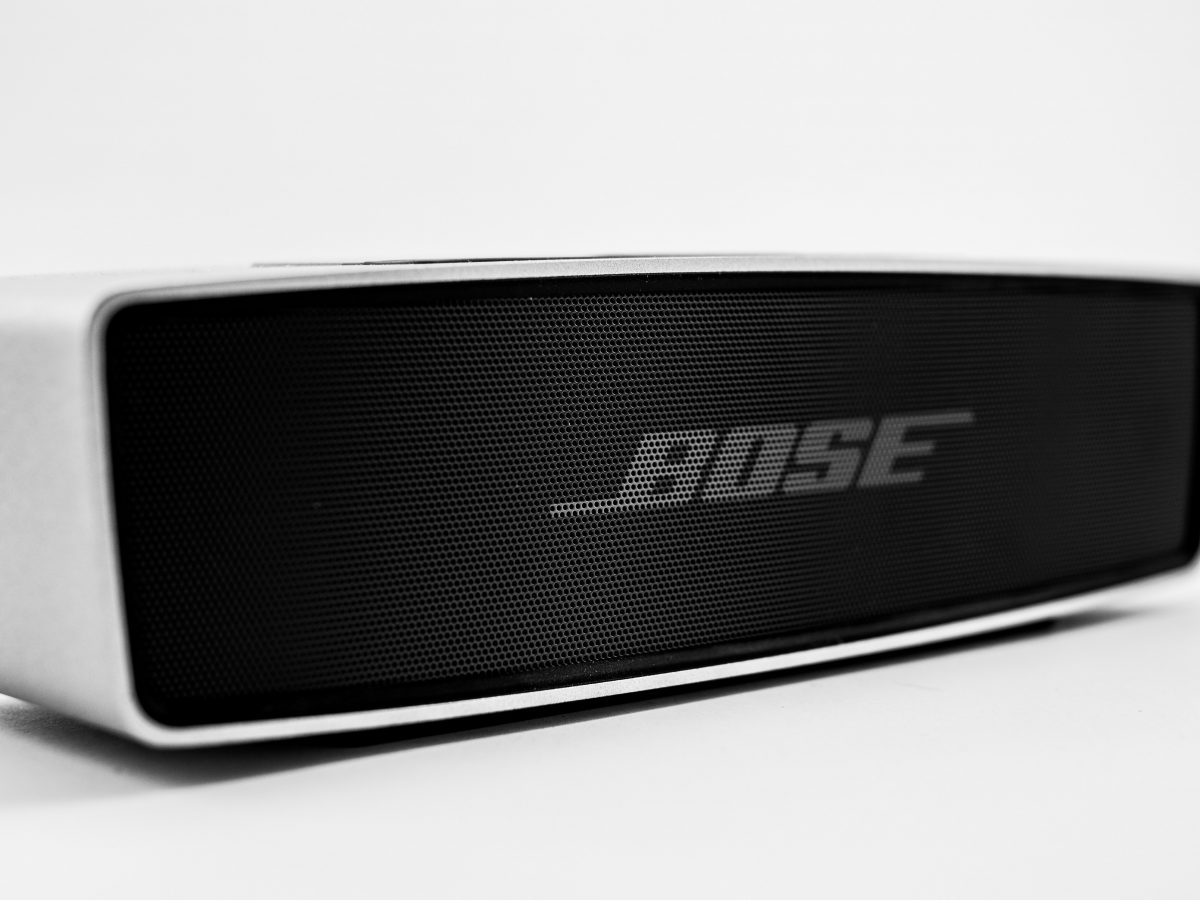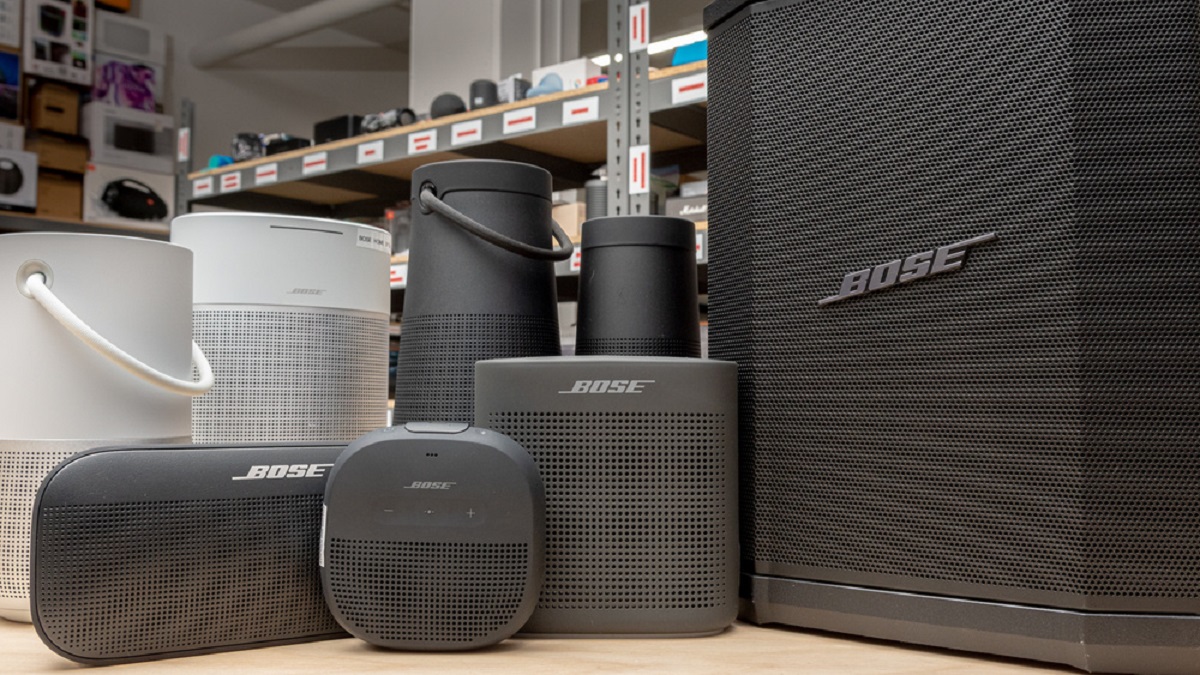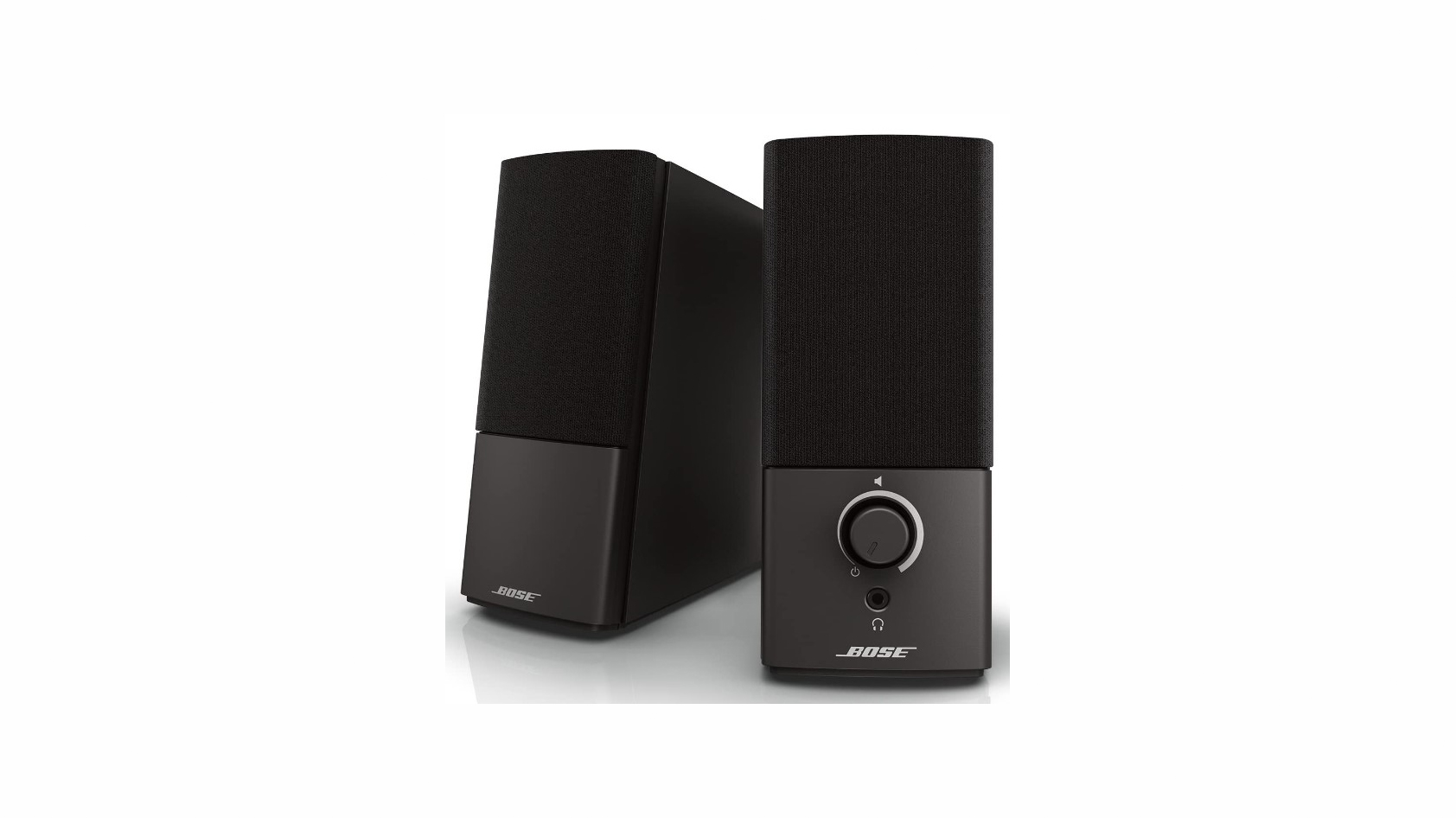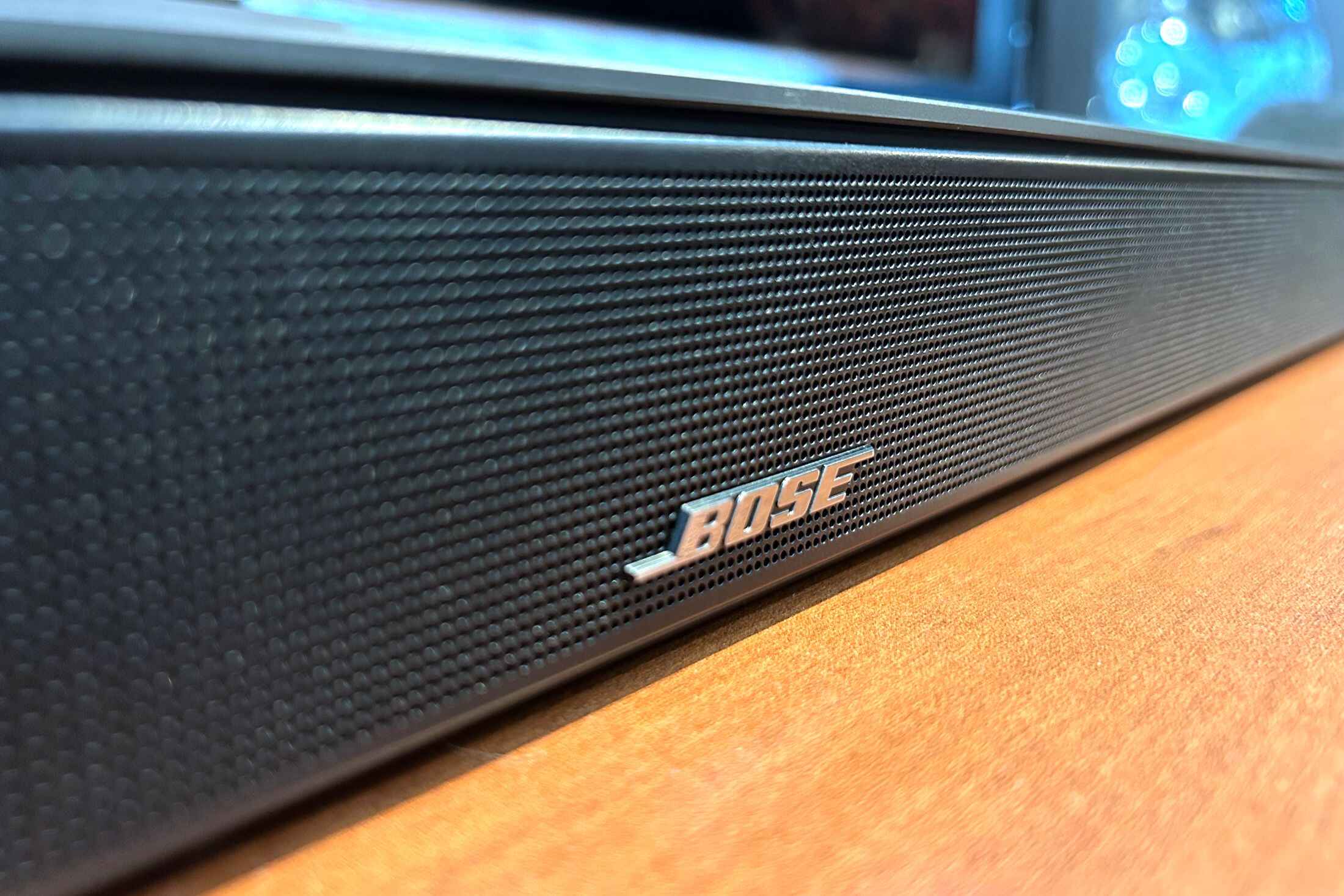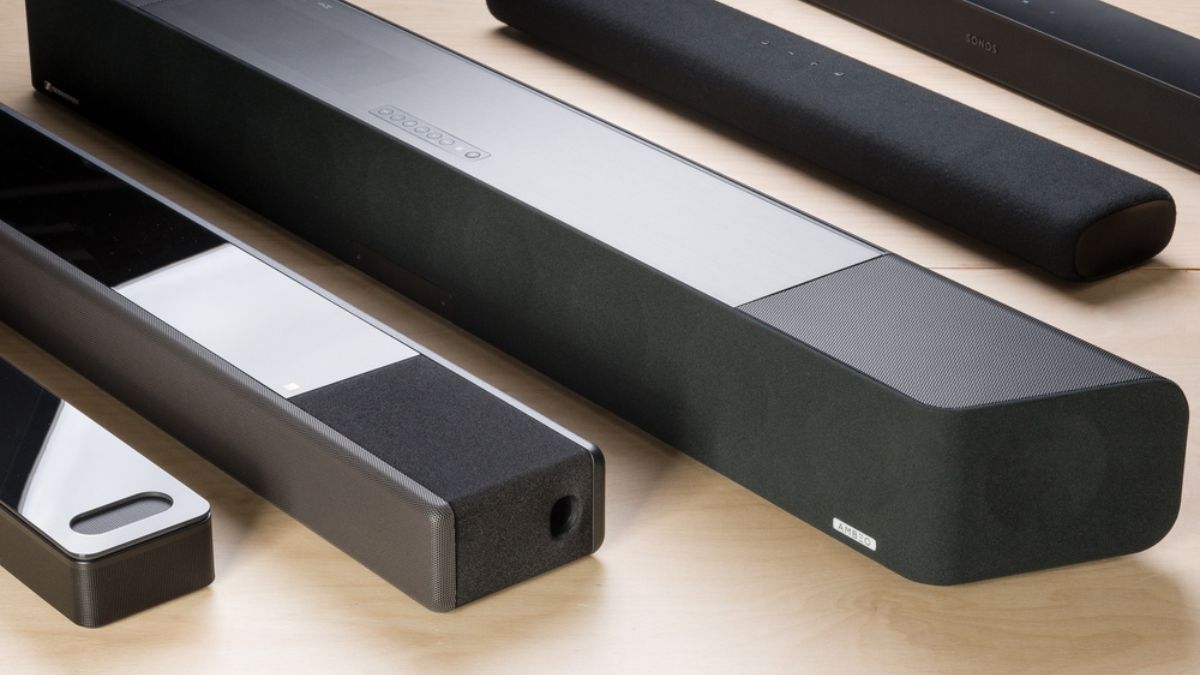Introduction
Welcome to our guide on how to set up the Bose Soundbar 500! If you’ve recently purchased this sleek and powerful soundbar, you’re in for an immersive audio experience. The Bose Soundbar 500 offers excellent sound quality, smart capabilities, and easy integration with your existing home theater system. In this article, we’ll walk you through the step-by-step process of setting up your new Bose Soundbar 500.
Before we begin, it’s important to note that the Bose Soundbar 500 is designed to be compatible with a variety of devices, including televisions, smartphones, tablets, and music streaming platforms. Whether you’re a movie enthusiast, a music lover, or both, this soundbar will enhance your audio experience with its advanced features and connectivity options.
Setting up the Bose Soundbar 500 may seem daunting at first, but don’t worry – we’re here to help you navigate through the process. Throughout this guide, we’ll provide you with clear instructions and tips to ensure a smooth setup. So let’s dive right in and get started with unboxing the Bose Soundbar 500!
Step 1: Unboxing the Bose Soundbar 500
Congratulations on your purchase of the Bose Soundbar 500! Before we can begin the setup process, the first step is to unbox the soundbar and familiarize yourself with the contents. Here’s what you can expect to find in the box:
- The Bose Soundbar 500
- Power cable
- Remote control
- Optical cable
- HDMI cable
- ADAPTiQ headset (used for sound calibration)
- Setup guide and user manual
Once you’ve unpacked everything, take a moment to remove any protective packaging and inspect the soundbar for any visible damage. It’s always a good idea to do this before proceeding with the setup process.
Next, find a suitable location for your soundbar. Ideally, it should be placed directly in front of your TV or mounted on the wall. The soundbar is designed to enhance your audio experience by projecting sound throughout the room, so make sure it is positioned where the sound can disperse evenly.
Ensure that you have easy access to power outlets and all the necessary cables for connecting the soundbar. It’s important to note that the Bose Soundbar 500 can be used as a standalone device or combined with other Bose speakers to create a multi-room audio setup. If you plan on expanding your audio system in the future, keep this in mind when deciding on the placement of your soundbar.
Now that you’ve unboxed and prepared the soundbar, you’re ready to move on to the next step of the setup process – connecting the soundbar to your TV.
Step 2: Connecting the Soundbar to your TV
Now that you’ve unboxed the Bose Soundbar 500, it’s time to connect it to your TV for an enhanced audio experience. Follow these simple steps to establish a connection:
- Identify the HDMI-ARC (Audio Return Channel) port on your TV. This is usually labeled specifically as “HDMI-ARC” or “Audio Out” port.
- Take the HDMI cable provided in the box and connect one end to the HDMI-ARC port on your TV.
- Connect the other end of the HDMI cable to the HDMI-ARC port on the back of the soundbar.
- If your TV doesn’t have an HDMI-ARC port, you can use the optical cable instead. Connect one end of the optical cable to the optical port on your TV and the other end to the optical port on the soundbar.
- Make sure the soundbar and TV are both turned off before proceeding to the next step.
- Connect the power cable to the back of the soundbar and plug it into a power outlet.
- Turn on your TV and soundbar. The soundbar should automatically detect the connection and switch to the appropriate input.
Once the connection is established, you should hear audio coming from the soundbar. If you are not hearing any sound, ensure the volume levels on both the TV and soundbar are appropriately adjusted. You may also need to check the audio settings on your TV and make sure the sound is set to output through the connected HDMI or optical port.
It’s important to note that the HDMI-ARC connection allows for two-way communication between the TV and soundbar, meaning you can control the soundbar’s volume and power with your TV remote. Additionally, if your TV supports HDMI-CEC (Consumer Electronics Control), you can enable this feature to further enhance the integration between your TV and soundbar.
With the soundbar successfully connected to your TV, you’re now ready to proceed to the next step – connecting the soundbar to the internet to unlock its smart capabilities.
Step 3: Connecting the Soundbar to the Internet
The Bose Soundbar 500 offers smart capabilities and access to various streaming services, which requires an internet connection. Follow these steps to connect your soundbar to the internet:
- On the remote control, press the “Settings” button.
- Using the navigation keys on the remote, select “Network Settings” and press “OK”.
- Select “Wi-Fi” and choose your home Wi-Fi network from the list of available networks.
- If prompted, enter your Wi-Fi network password and press “OK”.
- Wait for the soundbar to establish a connection with your Wi-Fi network. Once connected, you will see a confirmation message on the screen.
It’s important to ensure that your soundbar is within range of your Wi-Fi router for a stable connection. If you’re experiencing any issues with the Wi-Fi connection, try moving the soundbar closer to the router or consider using a Wi-Fi extender to improve the signal strength.
Once connected to the internet, you can access various streaming services like Spotify, Amazon Music, and more directly from your soundbar. You may need to log in to your accounts or activate certain services on the Bose Music App, which we’ll cover in the next step.
Having successfully connected your soundbar to the internet, you’re now ready to enhance the functionality and customize sound settings using the Bose Music App. So let’s move on to the next step!
Step 4: Setting Up the Bose Music App
The Bose Music App is a powerful tool that allows you to control and customize your Bose Soundbar 500. Here’s how to set it up:
- Download and install the Bose Music App on your smartphone or tablet from your device’s app store.
- Open the app and follow the on-screen instructions to create a Bose account or sign in if you already have one.
- In the app, tap on the “+” icon to add a new device.
- Follow the prompts to select the Bose Soundbar 500 as your device and connect it to your Wi-Fi network.
- Once the app successfully connects to your soundbar, it will automatically check for any available firmware updates. If a firmware update is available, follow the prompts to install it. This ensures that your soundbar is up to date with the latest features and improvements.
With the Bose Music App successfully set up, you now have access to a range of features and settings to enhance your audio experience. The app allows you to adjust sound settings, create custom presets, browse and control streaming services, manage connected devices, and even sync multiple Bose speakers for a whole-home audio setup.
Take some time to explore the app and familiarize yourself with its functionality. Customize the sound settings to match your preferences, create personalized sound profiles for different activities or genres, and enjoy the full potential of your Bose Soundbar 500.
In the next step, we’ll guide you on how to fine-tune the sound settings on your soundbar to optimize the audio output.
Step 5: Customizing Sound Settings
Customizing the sound settings on your Bose Soundbar 500 allows you to fine-tune the audio output according to your preferences. Follow these steps to optimize your soundbar’s sound settings:
- Open the Bose Music App on your smartphone or tablet and ensure it is connected to your soundbar.
- In the app, navigate to the “Settings” or “Sound Settings” section.
- Here, you can adjust various sound settings such as bass, treble, and dialogue levels to suit your personal preferences. Experiment with different settings to find the balance that enhances your audio experience.
- If your soundbar is placed in a specific location in the room, you can also use the ADAPTiQ calibration feature to optimize the sound for that specific environment. Simply follow the instructions provided in the app to perform the calibration process using the included ADAPTiQ headset.
- Don’t forget to explore the pre-set sound modes available in the app. These modes are designed to enhance specific types of content, such as movies, music, or sports. Try out different modes to find the one that suits your current activity.
- Remember to save your customized settings and presets so that you can easily switch between them with just a few taps in the app.
By customizing the sound settings to your liking, you can create an audio experience that perfectly suits your preferences and optimizes your listening pleasure.
In the next step, we’ll explore how to use voice assistants with your Bose Soundbar 500 to control it hands-free.
Step 6: Using Voice Assistants with the Soundbar
The Bose Soundbar 500 supports popular voice assistants, such as Amazon Alexa and Google Assistant, allowing you to control your soundbar and other compatible devices using voice commands. Here’s how to set up and use voice assistants with your soundbar:
- Ensure that your soundbar is connected to the internet and that you have set up the respective voice assistant on your smartphone or tablet.
- In the Bose Music App, navigate to the voice assistant settings.
- Follow the on-screen prompts to link your Amazon or Google account to the app.
- Enable the voice assistant feature and grant the necessary permissions for the app to access your voice assistant.
- Once the voice assistant is set up, you can use voice commands to control your soundbar. For example, you can adjust the volume, change modes, switch inputs, and even ask for information or play music from supported streaming services.
To activate the voice assistant, you can use the designated wake word, such as “Alexa” for Amazon Alexa or “Hey Google” for Google Assistant, followed by your command.
With voice assistants integrated into your soundbar, you can control your audio settings and other compatible smart devices effortlessly, all with just your voice. Whether you want to dim the lights, set a timer, or play your favorite playlist, voice control adds convenience to your audio setup.
Remember to refer to the respective voice assistant’s documentation for a list of supported commands and features specific to your soundbar.
In the next step, we’ll cover some common troubleshooting tips to help you address any issues you may encounter during setup or regular use of your Bose Soundbar 500.
Step 7: Troubleshooting Common Issues
While setting up and using the Bose Soundbar 500, you may encounter some common issues. Here are a few troubleshooting tips to help you resolve them:
- If you’re experiencing issues with the soundbar not turning on, ensure that it’s properly connected to a power source and the outlet is functioning. Try unplugging and replugging the power cable to ensure a secure connection.
- If you’re unable to connect the soundbar to your TV, double-check the HDMI or optical cable connections. Make sure the cables are securely plugged in and that they’re connected to the correct ports.
- If there’s no sound coming from the soundbar, ensure that the TV audio settings are correctly configured to output sound through the connected HDMI or optical port. Also, check the soundbar’s volume levels and ensure they’re not turned down or muted.
- If you’re experiencing connectivity issues with the Bose Music App, make sure your soundbar is connected to a stable Wi-Fi network. Restart your router and soundbar, and try reconnecting the app to your soundbar.
- If you’re encountering audio sync issues where the sound doesn’t match the video on your TV, try adjusting the audio delay settings in the soundbar’s settings menu. You can either increase or decrease the delay to find the appropriate synchronization.
- If you’re having trouble with voice assistants, ensure that the soundbar is connected to the internet and that you have set up the respective voice assistant correctly in the Bose Music App. Check the wake word and ensure proper pronunciation to avoid any recognition issues.
If you have tried these troubleshooting tips and are still experiencing issues, consult the soundbar’s user manual or contact Bose customer support for further assistance. They can provide specific guidance based on your particular situation.
With these troubleshooting tips, you should be able to overcome common challenges and enjoy a seamless and immersive audio experience with your Bose Soundbar 500.
Conclusion
Congratulations! You have successfully set up your Bose Soundbar 500 and are ready to immerse yourself in a captivating audio experience. Through the process of unboxing, connecting to your TV and internet, setting up the Bose Music App, customizing sound settings, utilizing voice assistants, and troubleshooting common issues, you have unlocked the full potential of your soundbar.
The Bose Soundbar 500 offers not only exceptional sound quality but also a seamless integration with your smart devices, making it a versatile and user-friendly audio solution for your home theater setup. Whether you’re enjoying your favorite movies, TV shows, or music, this soundbar provides immersive and dynamic sound that enhances your overall entertainment experience.
Remember to explore the various features of the Bose Music App, including sound customization options, preset modes, and voice assistant integration, to personalize your soundbar settings and further elevate your audio enjoyment.
If you encounter any issues along the way, refer back to the troubleshooting section for helpful tips and solutions. Additionally, don’t hesitate to reach out to Bose customer support for further assistance.
Thank you for choosing the Bose Soundbar 500. We hope this guide has been helpful in getting you started on your audio journey. Now, sit back, relax, and enjoy the immersive sound experience that the Bose Soundbar 500 brings to your home.










